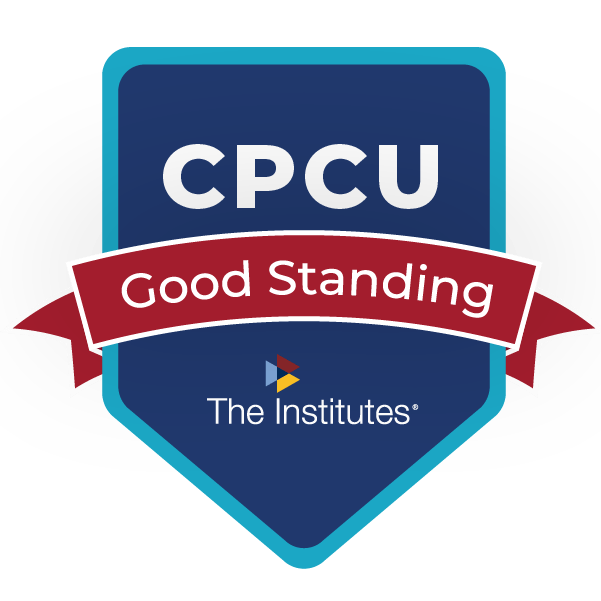Just Posted: Structured Installment Sales Case Study on Our YouTube Channel
August 18, 2023 – For those seeking to defer, reduce, or in some rare instances, completely eliminate capital gains taxes on the sale of a business, real estate, or other qualifying appreciated asset, perhaps no method of tax deferral holds more promise than a Structured Installment Sale (SIS). They’re easy to implement, straightforward, and, when implemented properly, fully compliant with Section 453 of the Internal Revenue Code.
In our latest YouTube Channel offering, we offer a Structured Installment Sale Case Study No. 3 as a helpful peek inside the analysis one might go through to determine whether or not a SIS is right for them. In this episode we go through the analysis to compare and contrast a hypothetical cash sale of a business for $2,000,000 to a SIS for the same amount of money.
The net result? a SIS saves the client over $200,000 in capital gains taxes!
The video is only seven minutes long and makes a compelling case for anyone selling their business. For those reluctant to sell because of the tax hit they anticipate, a Structured Installment Sale can help ameliorate that worry by letting sellers keep more of their sales proceeds for themselves instead of sending them off unnecessarily to the federal and state government.
Structured Installment Sales. Be sure to check out our other publications and videos on this money-saving topic.
Posted: August 18, 2023 | Category: Articles, Blog, Structured Sales | Comments Off on Just Posted: Structured Installment Sales Case Study on Our YouTube Channel
June is National Annuity Awareness Month
June 8, 2022 – Lost amid all the National “Fill in the Blank” Month celebrations recognized in June (my personal favorite just might be National Accordion Awareness Month), perhaps none hits closer to the pocketbook than the one created by the National Association for Fixed Annuities (NAFA): National Annuity Awareness Month.
While all the stock market indexes continue their roller coaster ride taking your money and peace of mind along with it, you might use this month to reassess your future income plans. Annuity rates are very attractive these days.
As interest rates increase, so does the return on your money when you exchange a lump sum for a promise to receive guaranteed future income from a life insurance company.
According to one recent article, “the average payouts from an immediate annuity increased by more than 11% for men and 13% for women since the beginning of 2022.”
This is excellent news for anyone settling a personal injury claim who has the options to structure their settlement. Structured settlements provide guaranteed tax-free (physical injury) or tax-deferred (n0nphysical injury) when elected as part of a negotiated settlement for damage claims.
As people near retirement, their risk profile generally shifts to more conservative options. The well-established security annuities offer is something that should be considered at this crucial juncture.
Posted: June 8, 2022 | Category: Blog, Retirement, Structured Settlements | Comments Off on June is National Annuity Awareness Month
“Annuities Are Hot”
June 3, 2022 – That’s the word on the street according to the author of “Rising Interest Rates Means Annuities Are Hot.”
The article goes on to promote the current environment as an excellent time to consider dedicating a portion of one’s retirement portfolio toward annuities, especially if near retirement.
Not discussed in the article but still relevant is the fact that structured settlement rates have similarly risen making them an excellent choice for those involved in settling a personal injury lawsuit.
Structured settlement premium is up 20% in 2022Q1 versus 20221Q1.
One notable statistic supports the article’s contention that annuities have increased in popularity:
- Fixed annuity sales are up 14% in 2022Q1 ($35.2 million) over the same period a year earlier (which was higher than the year before).
Although unstated, it’s probably not a coincidence that the increase in annuity interest coincides with the recent stock market challenges. When the riskiness of investing in the market becomes more pronounced, people tend to gravitate toward safer options with guaranteed features like fixed annuities.
While the article is very upbeat and encouraging about annuities, if I were to level one criticism of the article it would be that they suggest considering working with a financial advisor for guidance in this area.
The reason this suggestion may be worth reconsidering is because so many traditional financial advisors are notoriously negative when it comes to considering annuities. Even though economists and academics who study both traditional investing and annuities overwhelmingly favor annuities as the most efficient way to achieve income for life, many financial advisors frown on them.
Financial advisors, unless they specialize in income distribution, are more likely going to want to keep your money invested. (NOTE: Typical fee-only financial advisors charge ongoing fees for their service, whereas most annuity advisors receive a one-time commission usually equivalent to what the financial advisor would earn over a two-to-six-year period.)
One we do agree with. This IS an excellent time to consider annuities. Whether a structured settlement or a re-balancing of retirement funds, the climate for annuities hasn’t been this attractive for years.
Posted: June 3, 2022 | Category: Blog, Retirement, Structured Settlements | Comments Off on “Annuities Are Hot”
Structured Installment Sales for Tax Efficiency
July 12, 2021 – Since my article in Realty Times on structured installment sales last year, housing appreciation has continued unabated and interest by many in “cashing in by cashing out” of their paper wealth has increased.
With some talk of interest rates ticking up in the coming year and phase four of the real estate cycle, recession, overdue, this seems an ideal time to take advantage of market demand by selling appreciated real estate.
But then there’s the tax sting which keeps many from selling.
Because capital gains on assets held over two years on anything above $250,000 (single) or $500,000 (married filing jointly) for a primary residence can be taxed at 0%, 15%, or 20% depending on the amount of gain, strategically selling real estate to minimize these taxes is just plain smart.
Add in state capital gains taxes which can siphon away even more of your equity when selling and you have a lot of reasons for considering a structured installment sale when you sell.
The Four Phases of the Real Estate Cycle
The four generally accepted phases of a real estate cycle are recovery, expansion, hyper supply, and recession. Depending on who you want to believe, these real estate cycles can last anywhere from 7-to-10 years to as many as 18 years.
We’re not here to argue which phase we’re in right now and can’t predict with any degree of accuracy when things will change, and supply starts to outstrip demand.
We just know that when someone’s ready to sell and wants to defer, reduce, or eliminate capital gains taxes, we can help.
Our firm fields calls from interested parties from across the country nearly every week and we’ve helped many clients save money on their transactions.
Structured installment sales are supported by U.S. tax law and are surprisingly easy to implement.
Our challenge is not enough people have heard about this option yet despite its availability for decades.
Having helped clients save tens of thousands of dollars on capital gains taxes, we’re urging anyone contemplating selling a business or real estate to look into the benefits of doing so using a structured installment sale.
Photo by Tierra Mallorca on Unsplash
Posted: July 12, 2021 | Category: Articles, Blog, Structured Sales | Tags: structured installment sales | Comments Off on Structured Installment Sales for Tax Efficiency
Car Accident Statistics
March 15, 2021 – Structured settlements and automobile accidents are inextricably linked. The vast majority of structured settlements we place each year stem from motor vehicle accidents.
If you are unfortunate enough to be one of the six million people in the United States involved in an automobile accident each year, there is a less than 1% chance your injuries will be fatal.
This is one of the many conclusions gleaned from “Car Accident Statistics You Need to Know in 2021,” a consolidated deep dive of resource material assembled on the topic courtesy of Darrigo & Diaz Personal Injury Law Form.
But just in case, want to tip the odds in your favor of NOT dying in a car wreck? Here are some tips.
Don’t speed.
Wear your seat belt.
Don’t drive between 4:00 pm and 8:00 pm on Saturdays.
Don’t be a teenager.
Don’t be male.
Of course, fatalities represent only one adverse outcome stemming from automobile accidents.
Non-Fatal Accidents
 For the lucky ones who survive, injuries will be mild and temporary.
For the lucky ones who survive, injuries will be mild and temporary.
Some, though, will sustain catastrophic injuries leaving them with medical problems that require ongoing and extensive future care.
Regardless of the cause and severity of the accident, it’s not unusual for the injured parties to file claims or lawsuits against the at-fault party to ensure the financial impact of an accident.
Structured Settlements
When resolving claims and lawsuits, clients often choose structured settlements as an effective method of ensuring funds for their future care will be there when needed.
Also, structured settlements can provide guaranteed future income when someone is unable to return to their pre-accident employment.
For the family of someone killed in an automobile accident, structured settlements help ease financial strain. Carrying on with life after losing a loved one is challenging enough without the added burden of financial difficulties.
I hope you enjoy the link to the accident statistics. Because knowledge is power, a few minutes spent perusing these attachments will increase awareness helping increase your chances of avoiding an auto accident.
Photo by Harlie Raethel on Unsplash
Posted: March 15, 2021 | Category: Blog, Structured Settlements | Comments Off on Car Accident Statistics
Social Inflation and Its Impact on BI Settlements
January 27, 2021 – What is social inflation? If you’re a stat junkie who happens to work in or around the personal injury litigation arena, have I got a white paper for you!
Last June, the Insurance Research Council published Social Inflation: Evidence and Impact on Property-Casualty Insurance. This fascinating 18-pager is very readable. Further, it lays bare the impact evolving societal trends have on the rising cost of settlement and verdict values. By extension, social inflation impacts insurance industry profitability.
Every policyholder, claims handler, actuary, lawyer, and citizen who reads this paper will get a helpful glimpse of the future.
Anger Driving Claims Costs?
Personal injury lawsuit filings seem to correlate directly to societal anger.
One of the more interesting tidbits is the observed link between Americans’ general anger and their tendency to file personal injury lawsuits.
Recent Gallop polling suggests nearly one in four people are angry on any given day – the highest level in more than a decade.
No analysis was performed indicating the source of individuals’ anger.
A Role for Structured Settlements
Because of their unique ability to match future dollars with future needs, structured settlements can be especially helpful in addressing another social inflation trend. The so-called “nuclear” verdicts, or those exceeding $10 million, have emerged as a major threat to long-term insurance company viability.
With personal injury filings expected to continue increasing and nuclear verdicts a statistical reality, structured settlement usage is expected to continue serving a vital role in dispute resolution.
Perhaps the biggest stunner of the paper is this statistic: Average jury verdicts against trucking firms have increased a whopping 654% since 2012 and now top $17 million!
With actuarial-adjusted pricing available for those with severe injuries, structured settlements permit the negotiating parties to resolve their claims more cost-effectively before trial.
Somber Final Thought
It’s worth mentioning all the data collected for this paper predated the emergence of COVID-19. It will be interesting to see the pandemic’s impact on social inflation going forward.
Photo by Icons8 Team on Unsplash
Posted: January 27, 2021 | Category: Blog, Structured Settlements | Tags: litigation, structured settlements | Comments Off on Social Inflation and Its Impact on BI Settlements
Who’s Ready for 2021?
December 30, 2020 – As we wind down the year that couldn’t have been crazier, today we focus on everything positive and reach out to express our heartfelt thanks to all who helped contribute to our success.
This past year, we helped secure the futures of 85 individuals facing assorted financial challenges in 2020. They valued our expertise sufficiently to have entrusted us to help them make decisions involving nearly $24 million.
We are honored and humbled by the ongoing vote of confidence our clients have placed in us and wanted to send out a big CDC-compliant:

So just who did we help this past year?
Most of our clients were folks receiving settlement proceeds from a personal injury claim or lawsuit. We helped them choose risk-appropriate structured settlement or trust options with an emphasis on safety and tax efficiency.
We aided claims professionals, businesses, government entities and hospitals who require professional expertise in helping evaluate litigation exposure and negotiate effective claim settlements.
We added to our ever-expanding list of satisfied plaintiff attorneys who secure their own futures by deferring their contingency fees into fixed income annuities and managed equity accounts.
We helped a few people defer, reduce, or eliminate capital gains taxes by facilitating a structured installment sale when they were selling property.
We Zoomed into your homes and socially distanced offices to help provide specialized training on a variety of topics. We presented helpful information to claims offices, realtor groups and industry professionals on structured settlements, structured installment sales and other areas of interest.
THANK YOU for allowing us the privilege of serving you!
What’s Next?
Our pledge to you going forward is to keep doing more of the same AND MORE in 2021 and beyond! Whatever your financial future needs, if we can’t help you, we’ll find someone who can.
So, as we say goodbye to this historic (for all the wrong reasons) moment in time, we send you our most sincere wishes for a very safe and Happy New Year.
We understand your lives are different and some of you have suffered more personal losses than the rest of us. We send our most positive thoughts to you with high hopes the year ahead will bring peace and a return to some semblance of normalcy.
Posted: December 30, 2020 | Category: Blog, Structured Settlements | Comments Off on Who’s Ready for 2021?
IRS: Tax Implications of Settlements and Judgments
December 18, 2020 – Special thanks to the National Structured Settlements Trade Association (NSSTA) for calling our attention to a recent brief from the IRS which addresses important distinctions in the tax treatment of various personal injury damages.
[Click HERE] to read the brief.
Today, we share this summary with our clients who require guidance on matters involving taxation when receiving injury damages.
 Despite plenty of clarity on the topic, there remains sufficient misunderstanding regarding certain recoveries. How to differentiate between a physical (tax-free) injury and a non-physical (taxable) one, for instance.
Despite plenty of clarity on the topic, there remains sufficient misunderstanding regarding certain recoveries. How to differentiate between a physical (tax-free) injury and a non-physical (taxable) one, for instance.
Claims involving emotion distress are especially vexing to some.
This update helps address the key question every stakeholder needs to ask prior to finalizing any personal injury settlement:
“What was the settlement (and its corresponding payments) intended to replace?”
This four-page memo doesn’t specifically address the topic of structured settlements. We remind our clients, however, that proper income planning is crucial to maximizing indemnification.
Especially when receiving taxable damages, a structured settlement can enhance the overall value of one’s settlement significantly by increasing the after-tax recovery.
Whereas all damages (except punitive damages) paid on account of personal, physical injuries are tax-free under 26 U.S.C. § 104(a)(2) whether as a lump sum “or as periodic payments,” all other damages are considered taxable.
Taxable damages, on the other hand, are taxed as income is received. When settling for a single lump sum, all taxes will be due in the year the settlement is finalized. On larger settlements, this can have a severe negative impact on a client’s net recovery.
By structuring taxable recoveries, most people can mitigate their tax burden by spreading out their recovery over several years. The net effect of this strategy is a more tax efficient settlement.
Please don’t hesitate to contact us BEFORE your case settles to ensure you preserve all your post-settlement options. Meanwhile, I hope you find this resource helpful. Let us know if you have any questions.
Posted: December 18, 2020 | Category: Blog, Structured Settlements | Comments Off on IRS: Tax Implications of Settlements and Judgments
The Buffett Indicator
November 10, 2020 – Please, please, please, PLEASE understand the stock market is not without risk.
The stock market has had a phenomenal run over the course of the past decade. Fortunes have been made, lost for a bit, then made again.
If you’re among those who have benefited from this prolonged bull run, CONGRATULATIONS! You beat the house in Vegas.
Alas, human nature is such that prolonged stock market success often lulls investors into a false sense of security. They remain solidly invested even when certain indicators suggest it may be wise to pull back.
And just like the gambler who can’t walk away from the table when they’re ahead, bad times may lie ahead.
Now is one of those times. It’s actually been here for the better part of a year.
The Buffett Indicator
Warren Buffett has few peers when it comes to investing success. Using a combination of skill, common sense, patience, and a shrewdness which belies his folksy nature, Buffett has amassed a personal fortune and personifies wealth building acumen.
Because his words carry so much weight, the Buffett Indicator, which has historically pinpointed when stocks may be overvalued and could come crashing down, is something everyone with market exposure should pay close attention to and can be simplified as follows:
Market Capitalization/Quarterly GDP
The higher the Buffett Indicator number, the greater the risk.
Comparing Historical Buffett Indicators
According to this graph from DQYDJ.com, the Buffett Indicator hit 2.227 during Q2 2020. That’s really high! Throw in a global pandemic and stimulus spending over the past ten months and the market would seem even more precarious.
For the same reason athletic teams review film of games already played, sometimes backward glances can help shed light on how to prepare for the future. For perspective and to see what may lie ahead, let’s pick a few select periods starting when the nonagenarian Buffett was a spry 30-something year old investor:
Quarter Year – Buffett Indicator – DJIA – Years until DJIA returned
Q4 1968 – 1.022 – 6,529 – 25 years
Q1 2000 – 1.886 – 15,526 – 6.9 years
Q2 2007 – 1.524 – 16,747 – 6 years
Q1 2020 – 2.160 – 29,276 – ???
 IF the market does tank, are you comfortable waiting six, seven, or even twenty-five years until the markets return to their pre-crash levels? That’s a lot of cash you’ll be burning.
IF the market does tank, are you comfortable waiting six, seven, or even twenty-five years until the markets return to their pre-crash levels? That’s a lot of cash you’ll be burning.
Remember the Roaring Twenties? Of course, you don’t. Unless you’re 105 or older! That decade was one of exponential economic growth and widespread prosperity. It was an amazing time for many. Until it wasn’t. Once the bubble popped, the Great Depression arrived sending stock values plummeting along with the economy which took more than twenty-five years to recover from!
Your Safest Bet
So, if you are in or near retirement and are still fully invested in the market, do yourself a huge favor and GET OUT NOW! At least partially. You don’t need to completely eliminate your market exposure, but converting some of your portfolio into a stream of safe, secure, tax-advantaged cash flows will go a long way toward preserving what you’ve earned and protecting yourself from potentially catastrophic loss.
If you are about to receive money from a personal injury settlement, here’s another little bit of Warren Buffett wisdom worth sharing. Structured settlements remain the safest, surest choice for anyone ready to settle their insurance claim. Some options even include stock market-driven upside potential without the downside risk.
Posted: November 10, 2020 | Category: Blog, Retirement, Structured Settlements | Tags: retirement income, structured settlements | Comments Off on The Buffett Indicator
Pension vs. Lump Sum
September 22, 2020 – Two related AARP Bulletin articles may have bearing on your retirement plans. In short, companies are temping retirees with offers to pay their retirement benefits as a single, commuted lump sum instead of honoring their monthly pension obligations.
If you or anyone you know works for an organization that even offers a pension anymore, it’s worth your time to thumb through two recent articles: “Treasury Department OKs More Lump-Sum Pension Payments” and “Pension or Lump Sum?”
A few highlights from these articles:
According to a MetLife study, 20% of those who opted for the lump sum spent the entire sum within five and a half years.
Of those who weren’t broke by then, 35 percent worried they would run out of money.
Most economists warn that people can rarely, if ever, replicate the security of a pension.
Less ethical financial advisors may be biased against the pension since they can benefit from investing your money.
Lump sum buyouts tend to benefit the company offering them more than the individual receiving them.
(NOTE: The articles don’t even mention taxes which would also be a consideration)
COVID-19 likely hasn’t left its final impression on our economy yet. As such, businesses with pension obligations may find themselves forced to accelerate layoffs, early retirements, or staff reductions to remain financially viable. Wise retirees-to-be will want to be prepared.
Compare Before Deciding
There may be many non-financial reasons for choosing a lump sum over the pension payments, but if you are confronted with the choice, how do you determine whether the pension or lump sum buyout is the better deal?
After reflecting on the information contained in these articles, a sensible move is to ANALYZE VALUES by comparing if the pension payments you’re forfeiting can be replicated in the marketplace with the lump sum you’re being offered.
We can help you estimate the fair market value of your pension.
Call us before you commit.
No cost. No obligation.
For Example:
A 60-year-old female in Pennsylvania is offered early retirement by her company. Her employment contract requires the company to pay her a monthly retirement benefit of $1,000 for as long as she and/or her 60-year-old spouse live. (NOTE: Assumes an opposite sex couple in this example. Although different actuarial tables would be applied in most states when calculating values for same sex spouses, the same analysis is used).
Before completing her retirement paperwork, the company tells her she has the option of taking her retirement in a single lump sum instead of the monthly income and they offer her $225,000.00.
Is this a good deal?
Could they replace $1,000 a month for $225,000?
A quick survey of life companies rated A+ or better by A.M. Best reveals it would cost approximately $275,000 to replace the pension this couple would be giving up. As such, the short answer to this question is, no, the employer is not offering them market value for the pension.
On the other hand, let’s assume the company offered her $325,000 for the same $1,000 per month lifetime benefits. In that instance, these folks would be better off taking the lump sum because they could buy a traditional annuity that would pay lifetime income which EXCEEDS $1,000 per month for lump sum offered.
A decision on whether to accept a lump sum payout in exchange for your future pension benefits should not be based on pricing alone. But people always like knowing if they’re being treated fairly so assessing value is a good starting point. You might be surprised.
I have no problem confessing our firm’s bias: Generally speaking, sticking with the pension will be the better choice. We’re big fans of secure income you can never outlive. That said, these articles provide solid practical tips for deciding what your best option will be. Everyone’s situation is different.
 Whatever you do, don’t end up with an empty nest egg. There may be valid reasons to choose the lump sum over the pension benefits. But our advice is to think long and hard before doing so.
Whatever you do, don’t end up with an empty nest egg. There may be valid reasons to choose the lump sum over the pension benefits. But our advice is to think long and hard before doing so.
Photo courtesy of Luke Brugger at Unsplash.com.
Posted: September 22, 2020 | Category: Blog, Retirement | Comments Off on Pension vs. Lump Sum




















